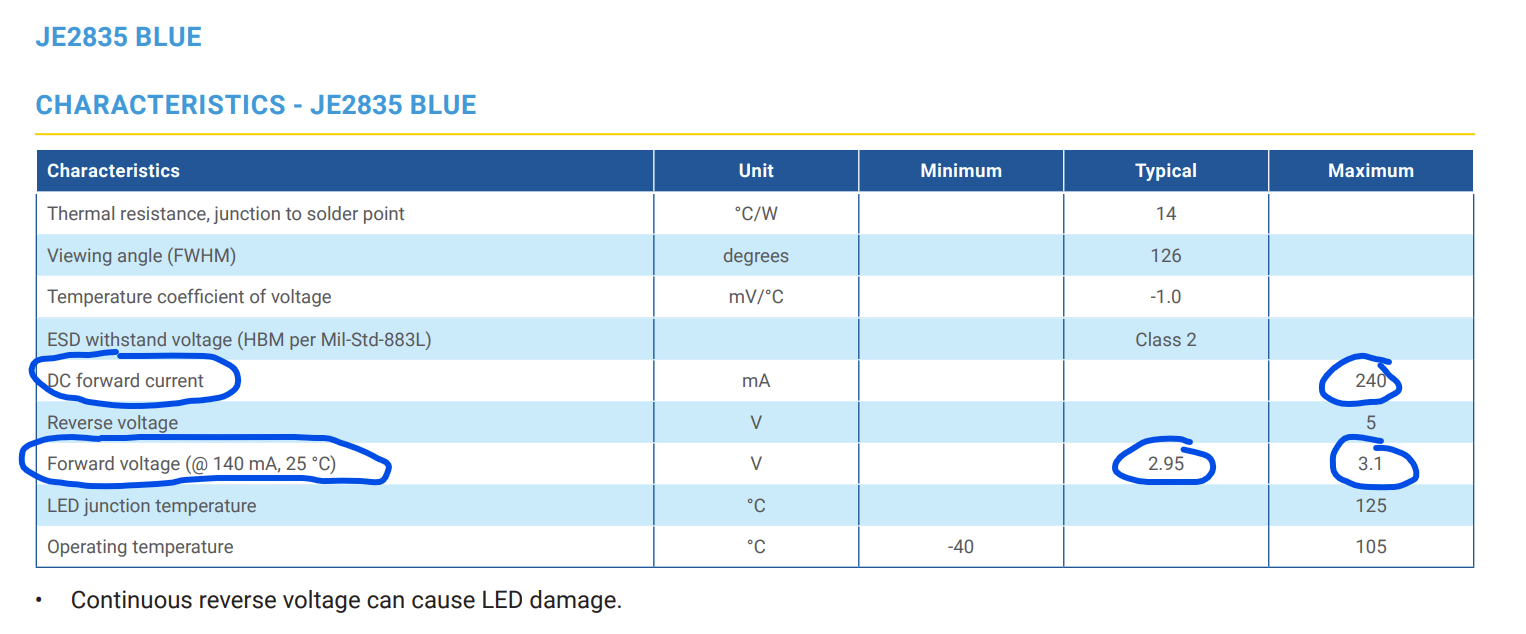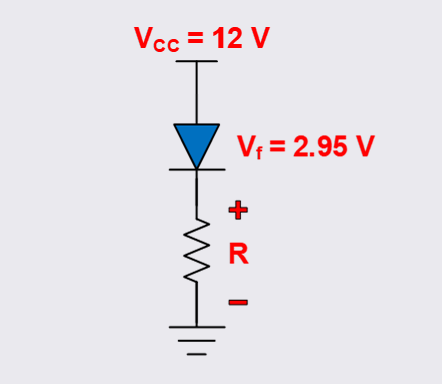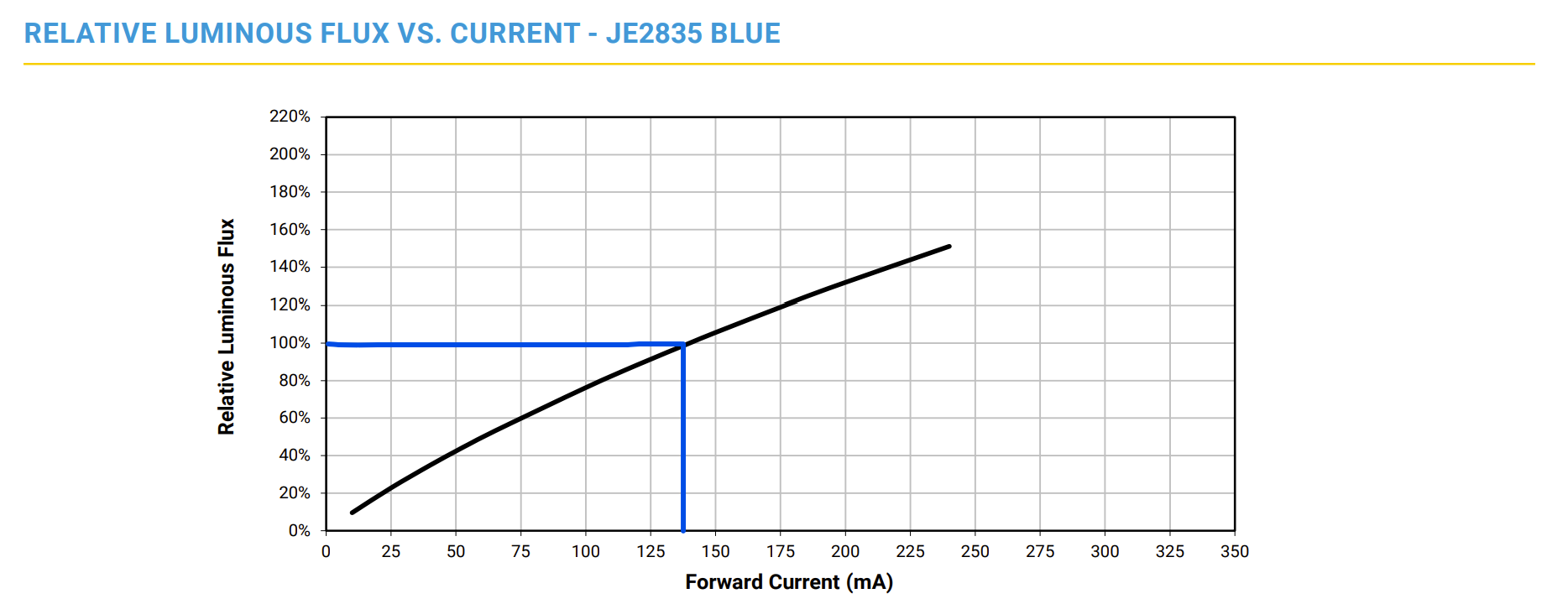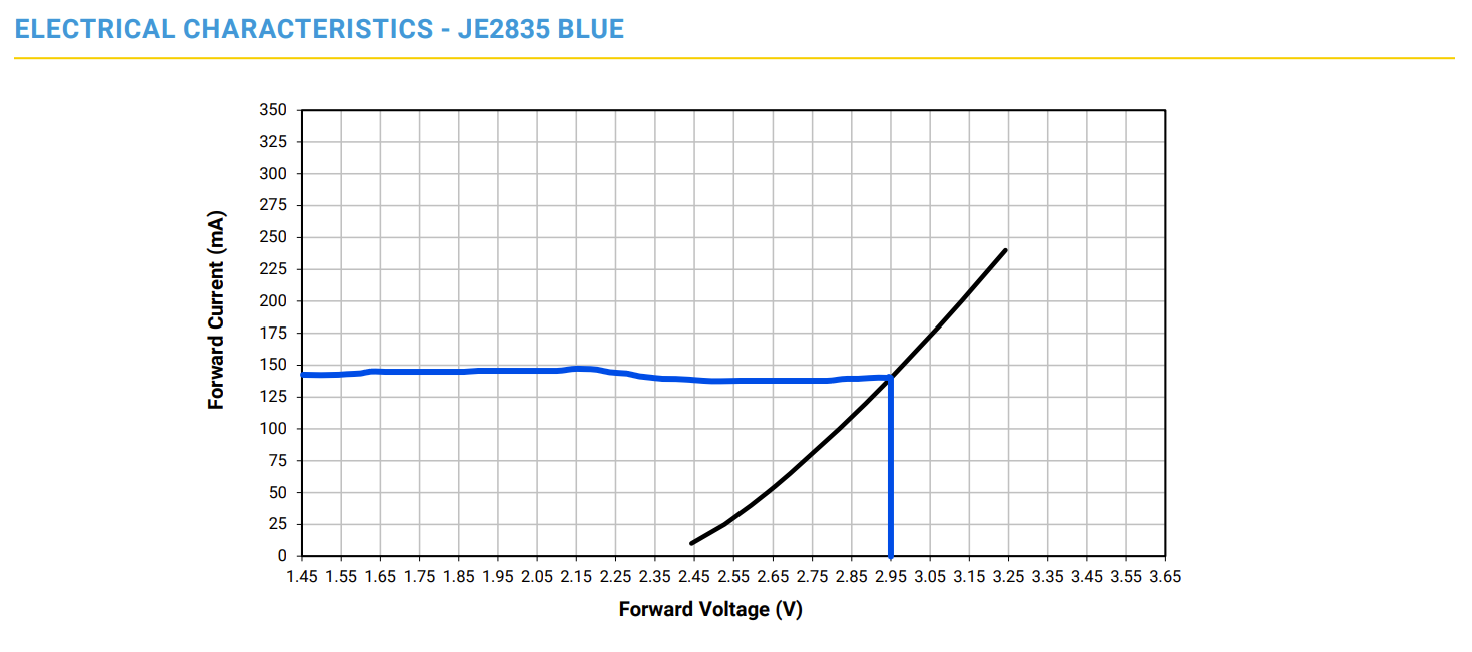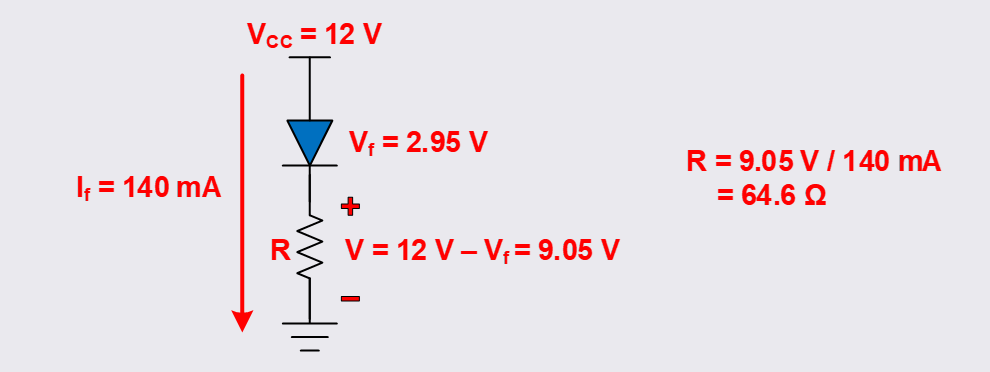How to Calculate Series Resistance for an LED
An LED often times needs a series resistance in order to limit the current through the light-emitting diode (LED). We want the LED to burn bright but also not burn out.
First step is to gather some information from the LED’s datasheet. Let’s look at a blue LED the JE2835 from Cree LED. The characteristics for the blue LED start on page 15 / 91 in the datasheet.
We can start with the electrical characteristics of the LED below.
Characteristics - JE2835 BLUE
From this table, we can conclude that the maximum forward current through the diode must be 240 mA or less. Any more, and this diode may burn out or sustain permanent damage.
The forward voltage for this diode is typically 2.95 V. Voltage can be upwards of 3.1 V, but we want to design the circuit for overall less voltage rather than the maximum. Let’s use 2.95 V as a starting point.
The circuit below is the diode followed by a series resistance. Let’s assume a 12 V source voltage, i.e. the same voltage of a car battery.
12 V source into the diode w/ series resistance
Next, lets check some other specifications in the datasheet.
The relative luminous flux vs. current table shows the point at which the light source is operating at its typical or specified total light output. At 100%, the forward current If = 140 mA.
Relative Luminous Flux vs. Current - JE2835 BLUE
Combine the forward current table with the electrical characteristics of the LED.
The forward current (mA) vs. forward voltage (V) can tell us the typical values to calculate the series resistance in the circuit above. A 140 mA forward current yields a 2.95 V forward voltage which is the typical value in the electrical specifications table above.
Electrical Characteristics - JE2835 BLUE
With the forward current of 140 mA, we can calculate the series resistance “R” to yield 100% relative luminosity while maintaining a good forward current without damaging the LED.
Calculating Series Resistance with Forward Voltage and Forward Current
Given your supply voltage VCC, we know that the remaining voltage exists across the resistor.
12 V - 2.95 V = 9.05 V across the resistor.
Then take the desired forward current, 140 mA, and use Ohm’s Law to calculate the resistance.
V = I x R
R = V / I
R = 9.05 V / 140 mA = 64.6 Ω
Next, round to the nearest standard resistance value. 68 Ω seems to be the best fit for resistance. Ensure that the power rating (wattage) of the series resistor can handle the current and voltage across the resistor. Use power which is…
P = I x V = current times voltage
P = 140 mA x 9.05 V = 1.267 W
The series resistor needs to have a wattage rating above 1.267 watts.
